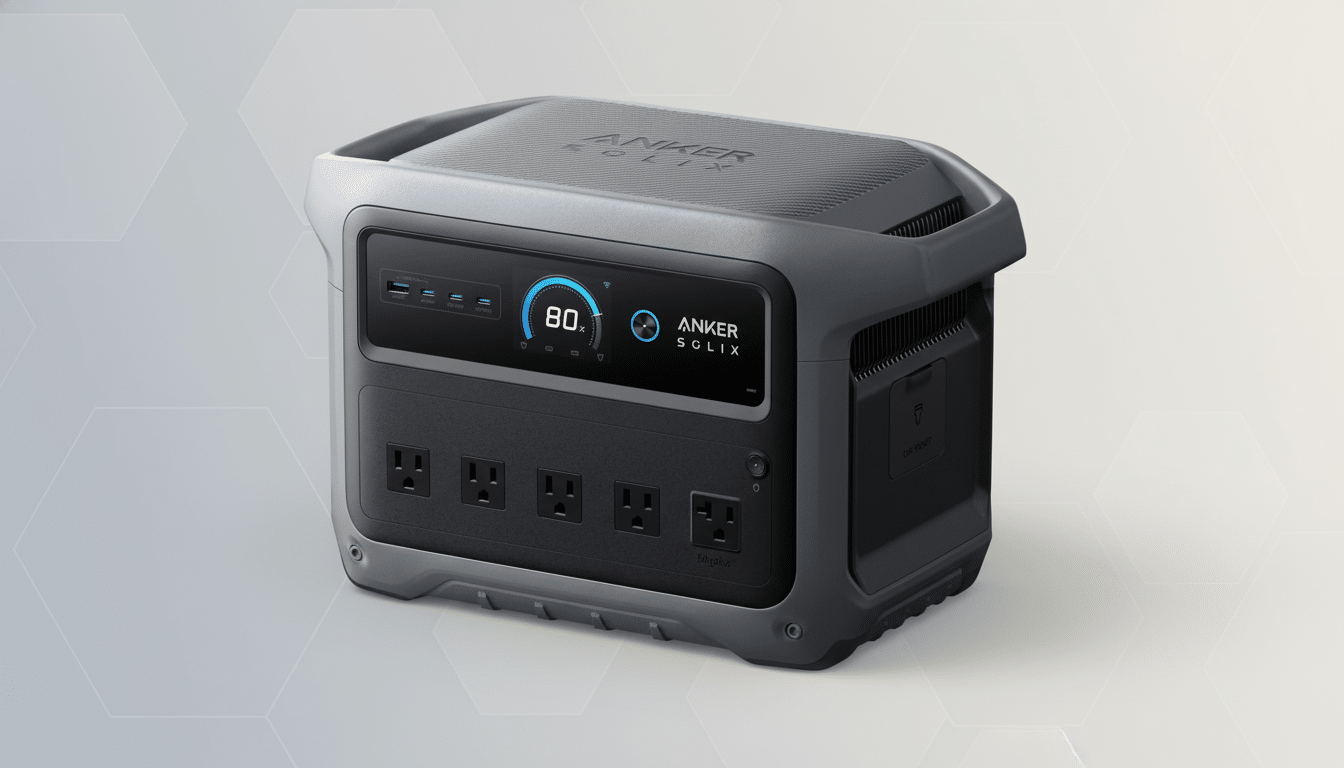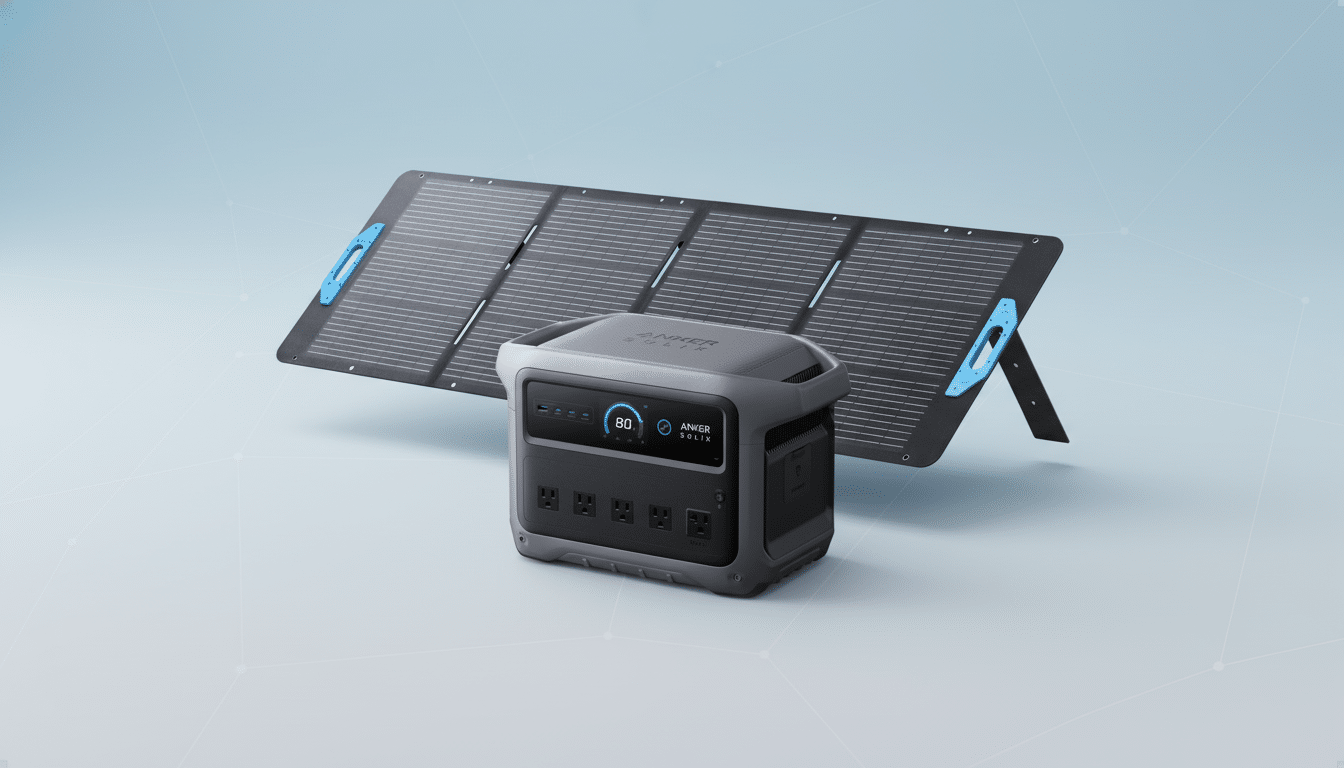If you’ve been on the fence about adding a durable portable power station to your home or camping setup, now is your chance. The Anker Solix C1000 Gen 2 is down to $397.99 from $799, a 50 percent discount and one of the best price-per-watt-hour values in its class. As of press time, this is tied for the lowest price we’ve seen on Amazon for this model, according to historical pricing tracked by popular deal-tracking tools.
At about $0.39 per watt-hour, the C1000 Gen 2 beats regular sale prices for similar lithium iron phosphate power storage systems, which can sometimes range between $0.55 and $0.80 per watt-hour. That makes this discount attractive not only as a short-term deal, but also as an intelligent long-term purchase for backup power and off-grid usage.

Why This 50% Off Price Is Significant for Buyers
Portable power stations have become more capable while also getting subtly faster to recharge. Take the Solix C1000 Gen 2, for instance: it includes a five-figure-cycle-rated 1,024Wh LiFePO4 battery system and ultra-fast AC charging that has seen new Guinness World Records, such as the fastest recharging in its class. More practically, in optimal conditions, it’ll go from near dead to topped off via wall power in well under an hour, which reduces the amount of time spent recharging considerably.
The speed is important because people tend to forget to plug in until a storm is on the way. With the C1000 Gen 2, even a fast top-up can still get you some meaningful time before the blinky lights come on. The discount basically means that you won’t be paying extra for faster recharging and a laden battery.
Key Specs and How They Deliver in the Real World
Being so small, the Gen 2 unit is also lighter compared to many 1kWh competitors – it weighs about 24–25 pounds, making it fairly feasible to move from room to room or stash away in a closet with its solid handle.
Inside is a 1,024Wh LiFePO4 pack designed for long-term durability—manufacturers typically claim at least 3,000 charge cycles to 80 percent capacity out of this chemistry, which translates to years’ worth of daily use.
Output flexibility is good for its small size. You receive multiple AC outlets for your home devices, a handful of USB-C ports that can quickly charge laptops and tablets, as well as a USB-A for older tech. Inverter power is sufficient for midband-wattage appliances, so that’s routers and lights and TVs, CPAP machines and countertop devices, as well as a bunch of power tools. It also has support for high-wattage solar input, so you can recharge off the grid with a couple of portable panels during the day.
Another useful benefit is that of a UPS with the ability to respond quickly after the power goes out, potentially serving as a backup source for sensitive electronics such as your desktop computer or home-networking gear. For a renter unable to install an in-place system, that plug-and-play resilience is particularly handy.
How Long It Can Power Basics in Daily Use
Real-world runtime will be a function of whatever you plug into it and whether you’re pulling AC or DC. After the losses expected from our average inverter, you should be left over with about 800 to 900Wh usable for your AC appliances. That’s enough to run a Wi-Fi modem and router, at about 15 to 20 watts, perhaps along with a few LED lamps for roughly an entire evening — and then some.

Even a modern refrigerator that uses an average of 120 to 150 watts can keep things cold for several hours, and often longer, because the compressor cycles on and off. That’s a proposition that would see a CPAP machine at about 40 watts going through multiple nights on DC where available, and a laptop operating for much of the workday at 60 watts. High-draw heaters and hair dryers will drain even the 1kWh stations quickly, so save those for short stints.
How It Compares With Rivals at This Price
Against established alternatives such as the EcoFlow Delta 2, Jackery Explorer 1000 Plus, and Bluetti AC180, the Solix C1000 Gen 2 competes in the basics departments of battery chemistry, output, and recharge speed. LiFePO4 is the gold standard now with cycle life and thermal stability, and fast AC charging removes one of the largest pain points on portable stations.
What makes this deal a home run is value. Those competing models often cost between $699 and $999 before add-ons — particularly if you want rapid recharging and from-the-grid AC output. Priced at just $397.99, first-time C1000 Gen 2 owners have an all-new flagship model pack, and people searching out a second unit to pair with their other devices won’t be able to do this well for significantly more money.
Expert Context You Can Trust for This Deal
According to the U.S. Energy Information Administration, the average yearlong duration extends for several hours, including major events, and varies significantly by region. That variety of use has made portable power a familiar household convenience. Consumer safety agencies also maintain warnings against using gasoline generators indoors; battery stations like this are safe to operate inside and produce no exhaust, a message that the U.S. Consumer Product Safety Commission has been careful to stress.
For long periods of time off the grid, by tethering storage to solar, the National Renewable Energy Laboratory has demonstrated that resilience can soar. With a couple hundred watts of panels, lots of users can fill up a 1kWh battery during a sunny day and go through days on end during outages or camping.
Who This Is For and Why It May Suit Your Needs
Homeowners and renters looking for a quiet, indoor-safe backup power source should have peace of mind right out of the box. Outdoor lovers will love the fast top-ups between adventures and a little footprint in a vehicle or RV. Remote workers can think of it as a desktop UPS that also serves as a travel power hub. If you’ve been looking forward to a sub-$400 price tag on a modern 1kWh LiFePO4 station that refreshes quickly, the Solix C1000 Gen 2 is the unusual no-brainer.
Bottom line, this is the best portable power station deal going: half off a fast-charging, long-lasting unit that hits the sweet spot of capacity, portability, and price.

